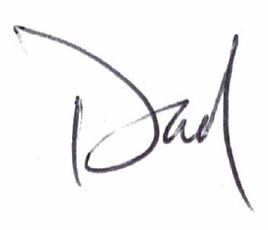
Around 2010, almost all schools stopped teaching cursive writing under new guidelines. As a result of this, millions of children in the US and Canada were not taught this fundamental tool of the 3Rs. Fortunately, my daughter when to a school that taught not only fairies but also cursive. She learned to make loops and knew what crossing the t’s and dotting the i’s actually meant! Her skill allows her to be able to read with limited success my chicken scrawl grocery list. She even edits the list to add things she wants; sometimes I’d indulge her for her effort in proper spelling.
When she got invited to a birthday party, she decided to write a quick note into the birthday card for her friend. She eventually filled the interior of the card with carefully spaced loops and tails. Very proudly, she tucked the card into the present’s ribbing wrapping. When her friend opened the card, she had a dazed look and said to my daughter, “I can’t read your writing.” What do you mean, ‘I wrote neatly,’ said my daughter. “No, I can’t read cursive!” Oh!
Here’s what a happens when a child learns cursive writing. Their writing efforts are more deliberate. The writer can’t simply and randomly loop their script; they have to count every large and small vertical loop so they all link each letter at the right height and proportion. Because they have to be explicit in transcribing each letter, they learn to become better spellers, too.
![]()
As a hiring manager myself, I do ask if the candidate can write in cursive. Workplace skills I can teach, cursive I will not. With all things being equal, I’d still prefer to hire someone who can communicate effectively in both digital and analog formats.
According to scientists, cursive handwriting stimulates the brain in ways that typing, printing (much less texting) cannot. There’s a component of right-brain creativity that is linked to the expression of left-brain language control. This interplay stimulates the formation of neural pathways that increase mental abilities.
Unless your child is a touch typist, writing cursive is immensely faster than printing. Note taking becomes natural and the brain is freed to buffer live speech as the fluidity of writing in script takes less time and interruptions—something that printing simply cannot match.
In addition to improving overall penmanship, a handwritten note expresses thoughtfulness to any message and the written script is a representation of the person who would be proud of its presentation. It uplifts person’s confidence and elevates intellectual exchange—not to mention that it adds an immense personal touch.
This isn’t to say that a person who doesn’t read or write cursive is a comparable illiterate, but the vast majority of the people (in the workplace) grew up with this basic skill and it isn’t a task that is going away. And unfortunately, not knowing how to read cursive, especially in the workplace invites embarrassment and judgement. As a hiring manager myself, I do ask this question. Workplace skills I can teach, cursive I will not. With all things being equal, I’d still prefer to hire someone who can communicate effectively in both digital and analog formats.

